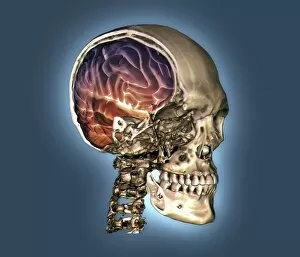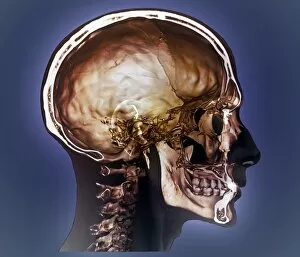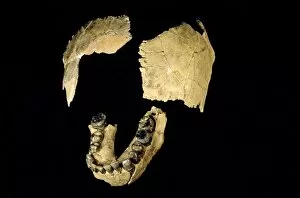Cranial Vault Collection
The cranial vault, a fascinating structure that houses the intricate workings of the human brain
All Professionally Made to Order for Quick Shipping
The cranial vault, a fascinating structure that houses the intricate workings of the human brain. From normal skulls to ancient artifacts, 3D CT scans and historical artwork, this captivating caption takes us on a journey through time and evolution. In one corner, we have the normal skull and brain, beautifully preserved in its natural state. Its delicate features showcase the complexity of our most vital organ. Alongside it, a 3D CT scan C016 / 6333 reveals even more intricate details hidden beneath the surface. Moving back in time, we encounter the Cro-Magnon skull - an ancient relic that offers glimpses into our early ancestors' lives. The ruggedness of their cranial vaults tells tales of survival and adaptation. But let's not forget about Homo habilis - their skull bones provide evidence of our species' evolutionary progress. These remnants remind us how far we've come as intelligent beings. As we delve deeper into history, exquisite 14th-century artwork showcases detailed depictions of brain anatomy. These masterpieces serve as testaments to humanity's fascination with understanding ourselves from centuries ago. And then there are Neanderthal skulls - intriguing specimens that bridge gaps between different branches on our family tree. Their distinct cranial vaults offer insights into parallel lines of development within our species. Lastly, another glimpse at a Cro-Magnon skull reminds us once again how closely related these ancient humans were to us today. Their similarities highlight both continuity and change over thousands of years. The cranial vault is not just a protective shell; it holds stories waiting to be unraveled by scientists and historians alike. Through these various representations - from modern scans to prehistoric remains - we gain valuable knowledge about ourselves and those who came before us.









